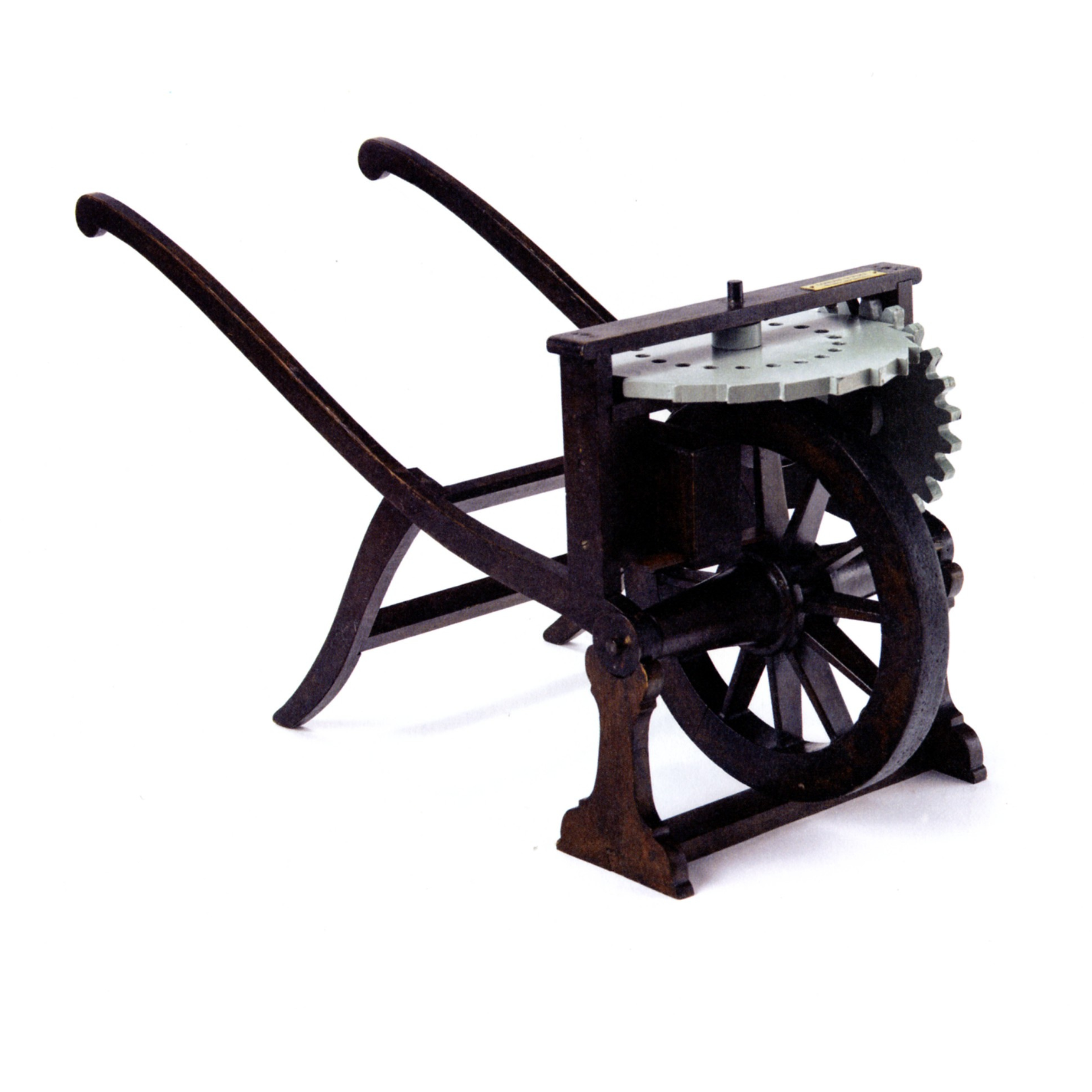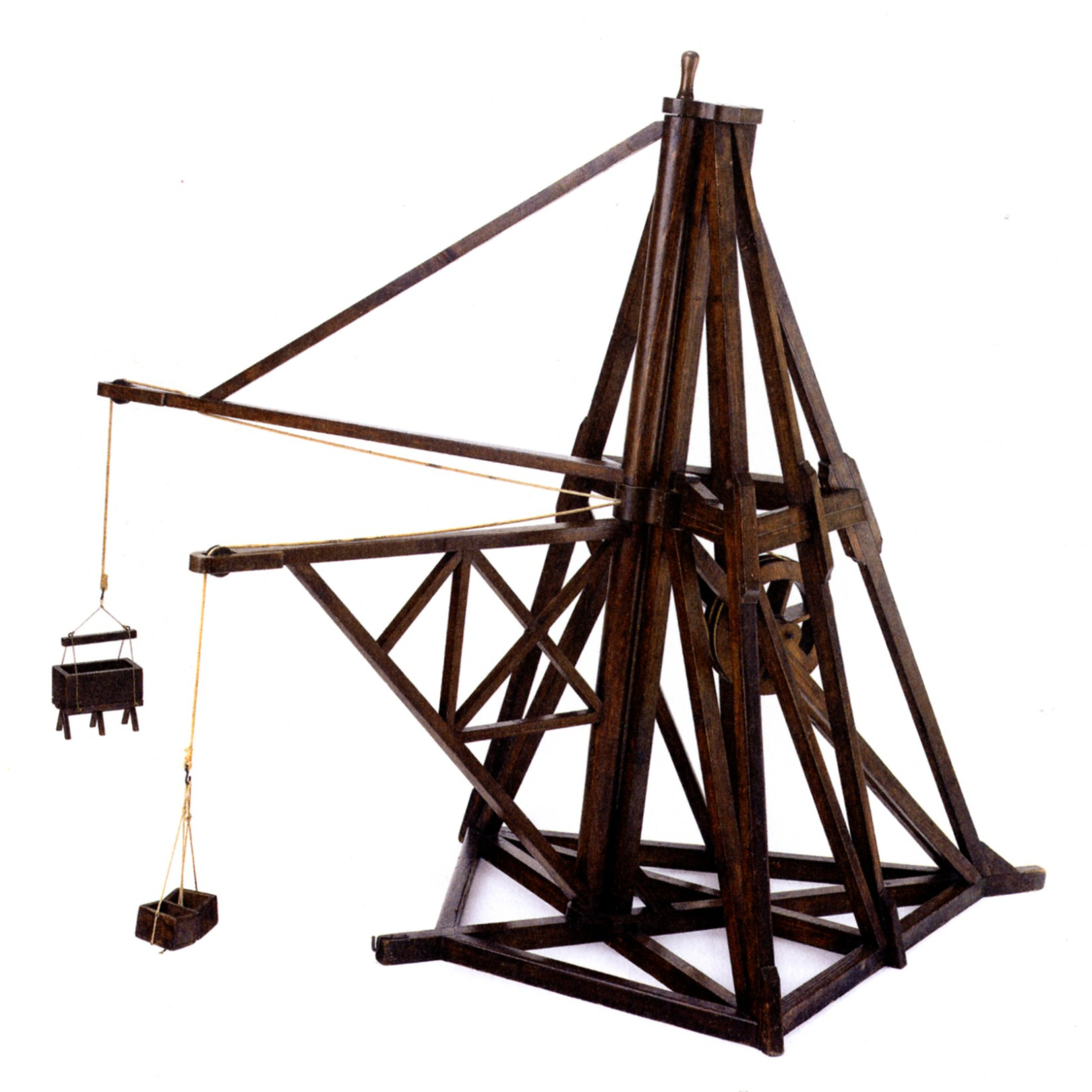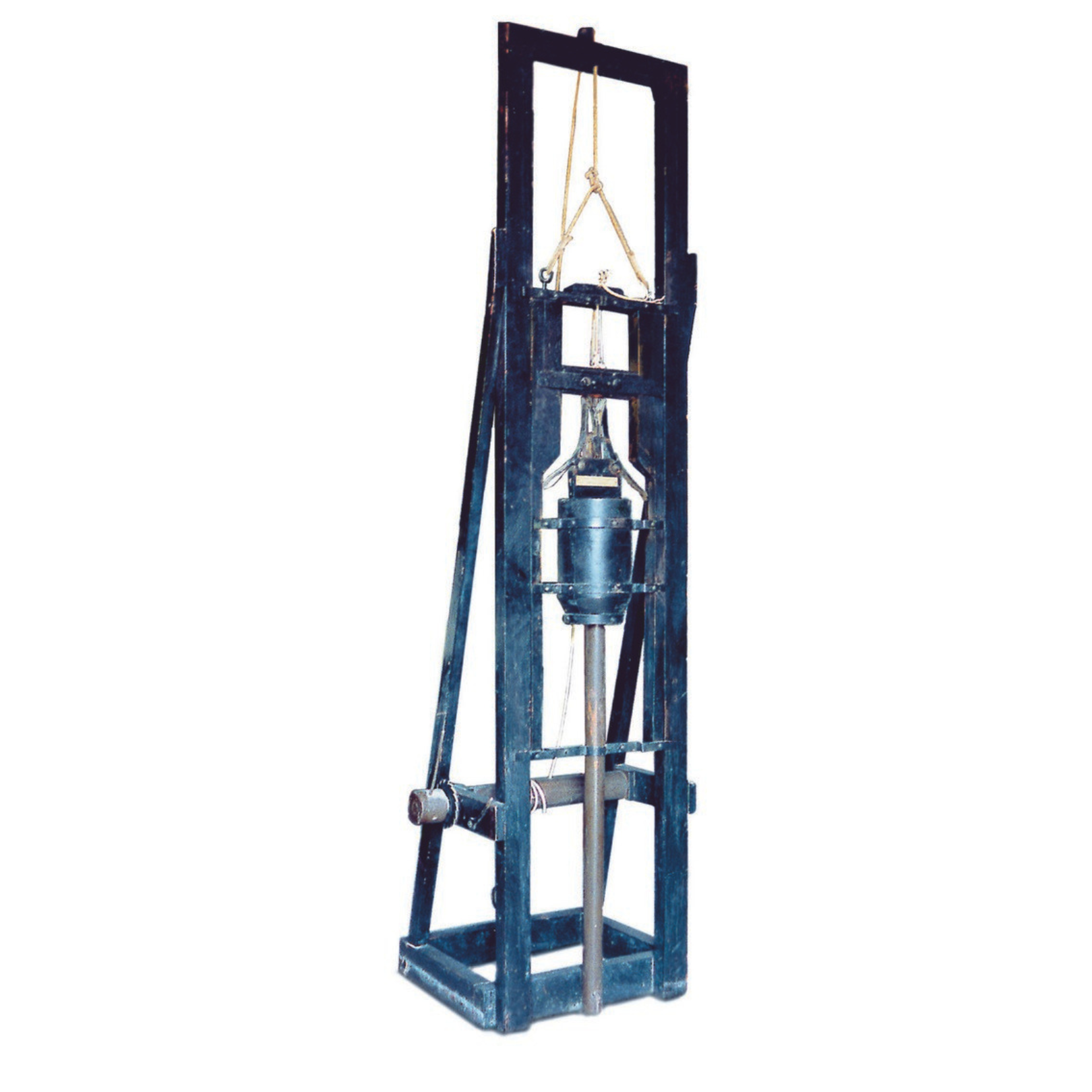Machines for transforming the territory
Reinforcing a riverbank to protect a settlement from flooding, reshaping the profile of a hill to facilitate the expansion of a town, or constructing a canal to allow for trade and the irrigation of farmland—these are all examples of humankind’s enduring desire to transform the landscape.
In this field of study, Leonardo—like many other Renaissance engineers—approached problems from a design perspective, taking an interest in tools of ancient origin such as the odometer, which made it possible to easily measure even great distances on land. He sought to improve machines like the pile driver, a Roman invention still widely used on Renaissance construction sites, and pushed the limits of the technology of his time by imagining gigantic machines capable of accelerating construction work like never before.
This section presents a selection of Leonardo’s designs conceived for land transformation projects, closely connected to the research he conducted as a hydraulic engineer, also featured in the museum section “Leonardo in Vinci.”
Works of the collection
3 works belongs to this collection


